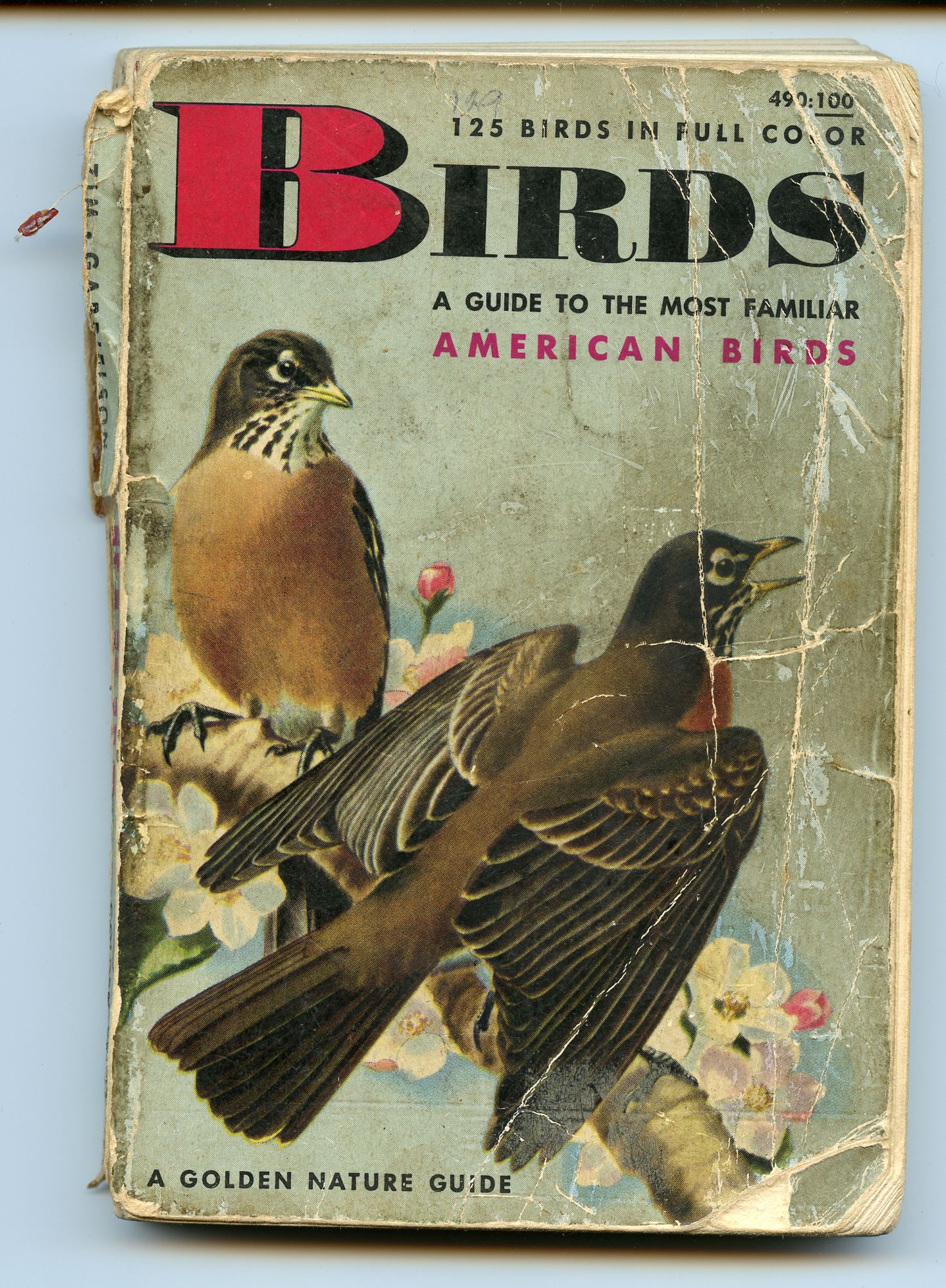How I Got Into Birding
by Kent Fiala
Reproduced from Carolina Bird Club Newsletter, October 2019

I always had trouble with the long drive to Grandma's house. "Are we there yet?" "Are we there yet?". My mother had to keep finding ways to keep me occupied. One day when I was in second grade, I was with her on a shopping trip to our tiny bookstore. On impulse, she purchased a copy of the Golden Nature Guide "Birds. A Guide to the Most Familiar American Birds. 125 Birds in Full Color" by Zim and Gabrielson (not to be confused with the Golden Guide to Birds of North America by Robbins, Bruun, and Zim, published several years later). She told me that the book was for me but that I could not have it until the next trip to Grandma's. When I finally got my hands on the book, riding in the car, I was smitten. I loved that book, and from that day on I called myself a birdwatcher.
However, my interest was what might be called an academic interest. I liked reading about birds and looking at pictures of them, but I did not actually learn to see birds. Growing up in Nebraska, I imagined that I was in a bird desert and would have to wait until I grew up and could travel to forests and mountains before I could see birds. I had no one to show me the truth, and I did not discover it on my own.
Beginning in third grade I had a classmate, Mike, who was interested in birds, but we were opposite personality types (introvert/extrovert) and did not become friends. But Mike rode his bike past my house on the way to and from his piano lesson, and one winter day when I was 11, my mother saw him stopped in front of our house, apparently looking at something. She said that he must be looking at some bird and why didn't I go out and talk to him? I said no. Eventually I was persuaded, or coerced, and found that he was looking at a Brown Creeper. I was dumbfounded. I don't think that I have ever again been so completely flabbergasted by anything in my life. I knew all about Brown Creepers. I had read about them in the Burgess Bird Book for Children. But never in my wildest imagining had I supposed that it was possible to see one in Nebraska. And now I was not only seeing one in Nebraska, but IN MY FRONT YARD! It was almost more than I could take, and from that moment Mike and I were best friends. I date my beginning as a birder from that day, not from second grade.

Would it be child abuse today? Our parents allowed us to go out exploring the countryside alone, learning birds. We did have binoculars but neither of us had good field guides. Mike had the coffee-table book Birds of America by T. Gilbert Pearson, which was widely sold at the time, and I had my Golden Guide and a set of the already ancient Reed guides. On our very first outing together we saw American Tree Sparrows, another species that I knew all about but never expected to see, and Harris's Sparrows, which were a total revelation to me (but which Mike already knew). Later that spring we would always see nondescript greenish birds with wing bars that we could never identify. Mike looked through his book and concluded that they were Acadian Flycatchers, but I was not convinced. I looked through my Reed guide and found that the description of the Ruby-crowned Kinglet song, "surprisingly loud and varied for so small a bird", exactly matched our bird, so that was my identification. Arguments ensued. Somehow, we eventually switched sides, with Mike coming over to the Ruby-crowned Kinglet side and me switching to Acadian Flycatcher. Later I got my parents to buy me the Peterson Field Guide to Bird Songs of Eastern North America, the only guide on the market at the time. I played the records through from start to finish, and as the Acadian Flycatcher came up, I expected that at last I would be proven right. pizZA!-it sounded absolutely nothing like our bird. Crestfallen, I realized I had been right the first time and should have stuck with the Ruby-crowned Kinglet identification. Then the Ruby-crowned Kinglet came up and it too sounded nothing like our bird. I was really at a loss-I had expected the records to identify our bird, and I still did not know what it was. Suddenly our bird sang from the record player! Bell's Vireo! A bird that was not even illustrated in any book that we had. And the recording was not merely similar to our bird, it WAS our bird, exactly. It was as if someone had traveled to our town, recorded one of our very birds, and put it on the record. It was an electrifying moment for me.
It would be another three years before I met any adult birders, at a meeting of the Nebraska Ornithologists' Union. By then, I was already a good birder, but the meetings gave me a lasting appreciation of the value of bird clubs.
The Bell's Vireo experience taught me the value of knowing bird songs, and for most of my birding life I really specialized in birding by ear-so much so that someone once said "If a bird doesn't sing, Kent doesn't want to know about it", which wasn't far from the truth. Sadly, my hearing no longer allows me to be much of an ear-birder, but I am still birding. After 57 years of birding, last year a California Condor got me to 700 species in the original ABA area. There are always new experiences.